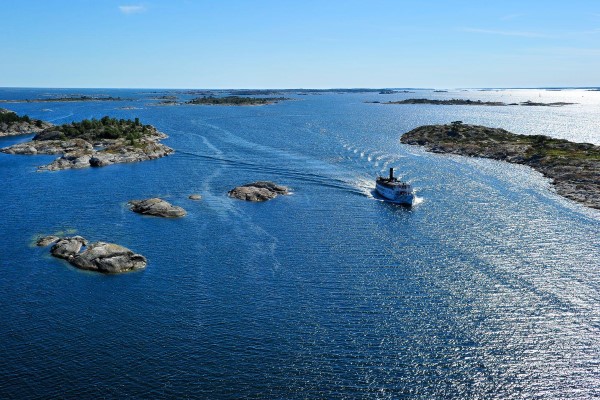Stromma and the World Wide Fund for Nature (WWF) have entered into a partnership for a cleaner Baltic Sea. The environment of the Baltic Sea has been hit hard by pollution and overfishing over the years. Seabird populations are declining and large-scale algal blooms have become an annual feature during the summer. As well as being important to all the holidaymakers who enjoy it, the Baltic is also a key source of revenue for all the countries in the region. A Baltic in ecological balance would generate SEK 280 billion in added value annually and half a million jobs for the region by 2030, according to the report "Turning adversity into opportunity: A business plan for the Baltic Sea" published by the Boston Consulting Group.

The partnership covers the entire Stromma Group in Sweden, Finland and Denmark. Our goal is to lead the way on sustainability issues in the industry, and to help drive improvements and increase passengers' eco-awareness. We'll be working on improving expertise on the status of the Baltic Sea, and supporting nature conservation projects in the region, with a view to ensuring a healthier Baltic. A further goal is to cut our own environmental impact, by setting and following industry-leading environmental targets in areas such as limiting emissions of CO2, nitrogen and sulphur, waste, recycling, ballast water and the use of non-toxic antifouling paints.
What is the situation in the Baltic?
The Baltic Sea region has a unique and highly sensitive ecosystem that is being put under ever-increasing pressure. The sea is used for everything from tourism and fishing to oil transport, wind farms and gas pipelines. In this shallow water, pollution and nutrient runoff have a greater impact than in other, deeper seas.
There are numerous threats, but the two most serious are eutrophication and unregulated fishing. The Gulf of Finland and the Gulf of Riga, for example, are seriously affected by eutrophication. Eutrophication means an increase in nutrients, primarily substances such as phosphorus and nitrogen. With around 19 million people living in the drainage basin that feeds into the Baltic, activities such as agriculture, industry and traffic emit large quantities of nutrients and toxins that end up in the sea – including around 800,000 tonnes of nitrogen and around 30,000 tonnes of phosphorus per year. The quantities vary from year to year, in part depending on precipitation levels, but they have remained far too high since the 1950s.
What can I do to help the Baltic Sea?
- Eat fish that are not endangered. Get tips on the fish and shellfish you can eat with a clear conscience in WWF’s Sustainable Seafood Guide at wwf.se
- Use ecolabelled and phosphate-free laundry and washing-up detergents. Phosphates cause eutrophication of the Baltic Sea.
- Use less in the way of disposable cutlery, plates and barbecues, and dispose of your rubbish at a recycling station to keep the countryside clean.
- Empty boat toilets and wastewater at the service points in port, instead of into the sea.
- Choose more environmentally friendly vehicles and fuels on land and at sea.
- Do not use toxic antifouling on your boat, and preferably use hull scrubbers.
- Replace your boat's old two-stroke engine with a four-stroke one.
- Use eco-aware cleaners, toiletries and other liquids.
- Send packaging and surplus products for recycling.
Become a Baltic sponsor!
Preventing the eutrophication and oil discharges that threaten both our beaches and bird life requires enormous resources. We therefore need to take joint responsibility for protecting the Baltic Sea environment. The Baltic Sea needs your support – become a sponsor today! Find out more at www.wwf.se

